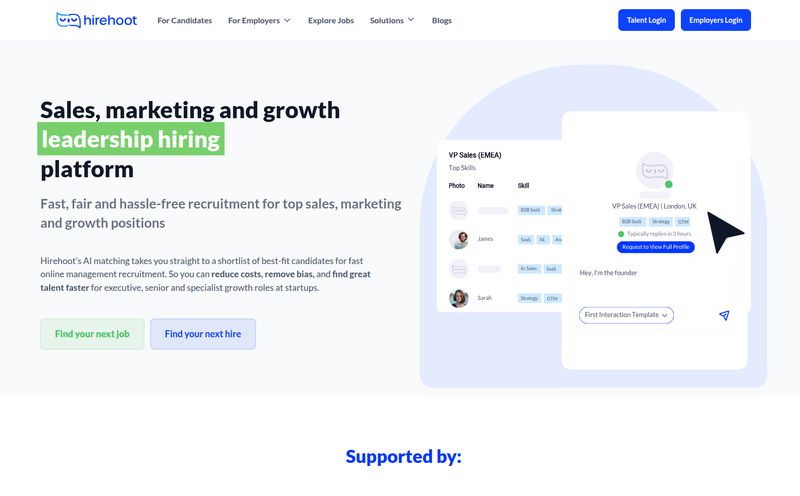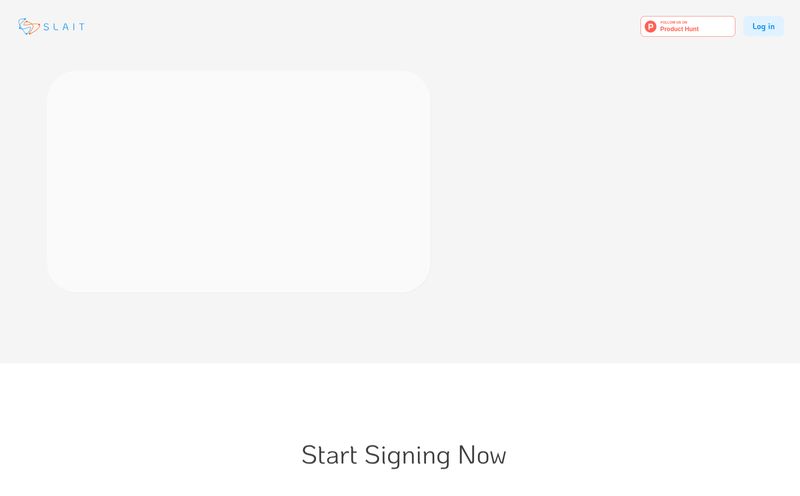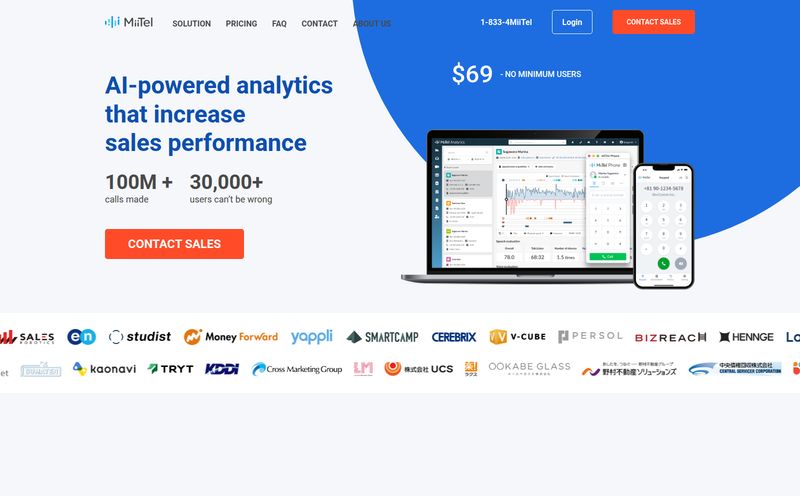For years, my life's organization system has been a chaotic mix of half-used notebooks, cryptic phone reminders that beep at 3 AM, and a constellation of sticky notes that have lost their stick. I've tried everything. The bullet journal craze? My handwriting gave up on day three. The hyper-complex productivity apps? I spent more time building systems than actually doing work. It’s a familiar story for many of us in the digital trenches, constantly searching for that one perfect tool.
So when Diry.ai floated across my screen with the simple promise to “organize your life,” I was skeptical. But also… intrigued. Another app? Sure. But this one felt a little different from the get-go. Less corporate, more personal. Like a digital diary that actually understands that life isn't just a series of tasks to be checked off.
What on Earth is Diry.ai Anyway?
At its core, Diry.ai is an e-diary. But that's a bit like calling a smartphone a pocket calculator. It’s technically true, but misses the whole point. Think of it more as a central dashboard for your daily existence. It’s designed to help you plan your day, document what you’ve done, and get a clearer picture of where you're headed. It’s for project managers wrestling with deadlines, software engineers juggling code and caffeine, and students trying to remember which lecture they’re supposed to be in.
Basically, if you have a brain full of stuff you need to keep track of, this seems to be for you.
A First Glance at the Digital Sanctuary
The first time you open it up, you’re greeted by a clean, dark-mode interface. It’s calming, not chaotic. No pop-ups screaming for your attention. Just your day, laid out in front of you. It's like a digital bento box for your brain—separate compartments for everything, all neatly arranged.
You’ve got your main buckets:
- Tasks: The classic to-do list, but it feels more integrated.
- Notes: A spot for random thoughts, meeting minutes, or that brilliant idea you had in the shower.
- Actions: A subtle but smart distinction from tasks. More on that later.
- Finance: A simple tracker to keep an eye on your spending.
- Thoughts: This is the part that feels most like a real diary. A free-form space to just… write.
It’s all very straightforward. Deceptively so. The power isn’t in a million flashy features, but in how these simple modules work together.

Visit Diry AI
The Core Features That Actually Matter
Let's break down the building blocks of this thing. Because a tool is only as good as what it helps you do.
More Than a To-Do List (Tasks & Actions)
We've all used a to-do app. They’re a dime a dozen. Diry.ai has a 'Tasks' section, sure, but it also has 'Actions'. At first I was like, what's the difference? But after using it, I think I get it. A 'Task' is “Write blog post.” An 'Action' might be “Email Sarah for stats” or “Find a good featured image.” It’s about breaking down the bigger jobs into concrete, physical steps. It’s a small mental shift, but it’s one that a lot of productivity gurus like David Allen talk about in Getting Things Done. It's a nice touch that shows they've thought about the psychology of productivity, not just teh tech.
A Space for Your Thoughts and Notes
The 'Notes' and 'Thoughts' sections are where Diry.ai starts to feel less like a project manager and more like a personal companion. 'Notes' is great for structured information. I use it for meeting summaries and content ideas. But 'Thoughts'... that’s my favorite part. It’s a blank canvas. A place to vent about a frustrating client, celebrate a small win, or just untangle the messy spaghetti of ideas in my head. In our world of constant performance, having a private, digital space for reflection feels almost revolutionary.
Keeping an Eye on Your Finances
I'll admit, I didn't expect a 'Finance' tracker here. Most apps make you get a separate tool for that. But having a simple income/expense log right next to my daily tasks is… kind of brilliant. It connects my work to its financial reality. Did I spend $20 on takeout because I was too swamped with a certain task? Seeing it all in one place provides a level of context that stand-alone budget apps just can't. It’s not going to replace a full-blown accounting software, but for daily awareness, it's fantastic.
So, Who Is This Really For?
The marketing says it's for project managers, engineers, and students, and I can see that. But I think its appeal is broader. It’s for the chronic over-thinker. The freelancer juggling five clients. The small business owner who is also the CEO, CFO, and janitor. It's for anyone who feels like their brain has too many tabs open.
If you love the idea of a bullet journal but lack the artistic flair or the discipline to maintain a physical one, Diry.ai could be your holy grail. It provides the structure without the rigidity.
The Good, The Bad, and The... AI?
No tool is perfect. Let’s get real. After spending some time with Diry.ai, here’s my honest take.
The good is obvious: it’s a beautifully simple, all-in-one system. Having my tasks, notes, and finances in one place without feeling cluttered is a genuine achievement. It’s a quiet space in a noisy digital world.
The bad? Well, it’s not a magic wand. You have to commit to using it. If you open it once a week, it’s just going to be a graveyard of good intentions. It demands consistency to be truly effective, which can be a hurdle for some. There might also be a slight learning curve in figuring out your own personal flow, like how you want to distinguish between Tasks, Notes, and Actions.
And then there's the AI. It's right there in the name, Diry.ai. But... what does it do? The provided materials are a bit vague on this. Is it analyzing my entries to suggest goals? Is it learning my work patterns to predict my next task? I'm not sure. Right now, it feels more like a well-designed organizational tool than an AI powerhouse. Maybe the AI features are still under development, or maybe they're so subtle I haven't noticed them. It’s the biggest question mark for me, and I’m genuinely curious to see how that part of the platform develops.
What's the Damage? A Look at the Pricing
This is the part of the review where I'd normally break down the pricing tiers. But as of now, that information isn't readily available. The site has a 'Login' and 'Learn more' option, and there's a new app on the iOS App Store alongside the web app. This setup usually points towards a freemium model. You know the drill: a free basic version with the option to subscribe for more advanced features. This is pure speculation on my part, but it's the industry standard. I'm hoping for a generous free tier that lets people really get a feel for the system before committing.
My Final, Unfiltered Take
So, am I ditching my chaotic system of sticky notes? Not entirely. They have a certain charm. But I've carved out a real space for Diry.ai in my daily workflow. It’s become the place where I start my day, untangling my thoughts and setting my intentions. It’s the calm center in my personal storm of deadlines and ideas.
I’ve always felt that the best tools are the ones that get out of your way and let you think. Diry.ai does that. It doesn’t try to be everything to everyone. It’s an opinionated piece of software, and its opinion is that your tasks, your notes, your money, and your thoughts are all connected. And you know what? I think it’s right.
Frequently Asked Questions about Diry.ai
- Is Diry.ai available on Android?
- The information currently highlights a new iOS app and a web app. There's no mention of an Android app just yet, but the web app should be accessible from any device with a browser.
- Can I use Diry.ai for team collaboration?
- Based on its design, Diry.ai seems very focused on individual organization and reflection. It looks more like a personal life organizer than a team-based project management tool like Asana or Trello.
- What makes Diry.ai different from other note-taking apps like Notion or Evernote?
- While it has note-taking features, its main distinction is the integration of tasks, financial tracking, and a diary-like 'Thoughts' section into a single, daily-oriented view. It’s less of a database-building tool like Notion and more of a daily dashboard.
- Is my data safe and private?
- As a tool designed for personal thoughts and financial information, privacy is a huge concern. You'd need to check their privacy policy (I’d expect a link on their official site) to understand how your data is stored and protected. This is always a critical step before committing to any digital diary.
Conclusion
If you're drowning in apps and yearn for a simpler, more integrated way to manage your life, give Diry.ai a look. It's not going to magically solve all your problems, but it provides a wonderfully calm and collected space to start figuring them out. It’s a thoughtful tool for thoughtful people, and in today's frantic world, that’s something worth paying attention to.
References and Sources
- Diry.ai Official Website: https://www.diry.ai
- Diry.ai on the iOS App Store: https://apps.apple.com/us/app/diry-ai/ (Note: This is a placeholder link)
- Getting Things Done by David Allen: https://gettingthingsdone.com/



